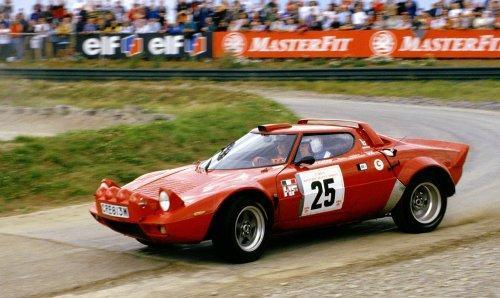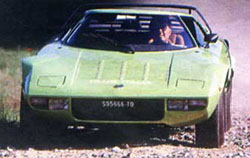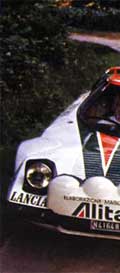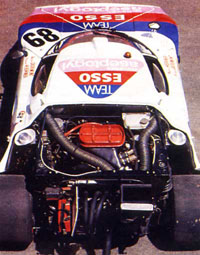|
Old Warriors Lancia Stratos ( Part1 )
|
|
|
|
|
|
The car was initially designed at Bertone under heavy secrecy. Nuccio Berton decided to build a very special show car for the 1970 Turin show. The concept had to be extreme. Lancia Fulvia mechanicals were used, and a new layout was engineered to install the power train at the back as in Porsche and Alphine. Finally Stratos would be a rally car that would grant lowest possible center of gravity, maximum grip to the driving wheels, excellent visibility, compact dimensions and possibly the best weight distribution. A midship rear wheel drive was the ideal solution, though four wheel drive was still some way off. This was a rally car down to the last straw. |
|
|
|
|
|
The Stratos was 1800mm wide, 840mm tall. The wheelbase was 2220mm while the length of the whole car was 3580mm long and weighed only 810kgs. |
|
|
Stratos was initially only a promotional tool for Bertone, but later was decided by Lancia to go in for small edition production, but which demanded great deal of passion and patience to convert this car into a real road legal. Things were not easy for Lancia to put this car into production, especially when the marketing team putting the least stakes on this car, but of course history proved that the real story after the launch was very different and very rosy. |
|
|
Marcello Gandini spent most of the 1971 working on the car whose engine was not even finalized. Lancia engineers wanted the stratos to have one of their engines. Many possibilities were discussed, including a v6 from Aurelia and Flaminia and the v6 from Fiat 130 or Fiat Dino. Finally tired of waiting for a Lancia engine, Gandini suggested Cesare fiorio to go in for a Ferrari Dino 246gt engine but the car was built without the engine since Ferrari did not deliver any engine or drawings to work upon. Finally Enzo decided to sell the engine to Bertone provided the car would be a winner. After few rigorous tests Ferrari finally decided to sell the engine and advised to go in for vertical carburetors. Weber at that time had the answer for vertical Weber carburetors. Lancia was advised to modify the intake manifold to accommodate the vertical carburetors, which Lancia Cose engineers did in no time. Finally the car was ready with a V6 dino 246 GT engine and Weber carburetors. |
|
|
|
 You
need to be the combination of an artist and a stuntman to drive this
car, very unconventional and extremely unpredictable. The car
initially came with the worst road manners, and the rear wheels
would exhibit camber as the engine unleashed massive torque and
would return back to original position when suddenly braked. This
often resulted in negative responses from the car. Well, if those
earth eating LANCIA DELTA Integrates have impressed you with
their terrific performance in the 80's and 90's, then this car
certainly brought bags of character even before Integrate was born.
Certainly the most sought after racing car from the Lancia stable,
and yes now a rare piece of automobile, Stratos has carved a
niche for itself. There is never a mixed response of awe and
appreciation when it comes to Stratos. People love it or hate
it.
You
need to be the combination of an artist and a stuntman to drive this
car, very unconventional and extremely unpredictable. The car
initially came with the worst road manners, and the rear wheels
would exhibit camber as the engine unleashed massive torque and
would return back to original position when suddenly braked. This
often resulted in negative responses from the car. Well, if those
earth eating LANCIA DELTA Integrates have impressed you with
their terrific performance in the 80's and 90's, then this car
certainly brought bags of character even before Integrate was born.
Certainly the most sought after racing car from the Lancia stable,
and yes now a rare piece of automobile, Stratos has carved a
niche for itself. There is never a mixed response of awe and
appreciation when it comes to Stratos. People love it or hate
it. 





